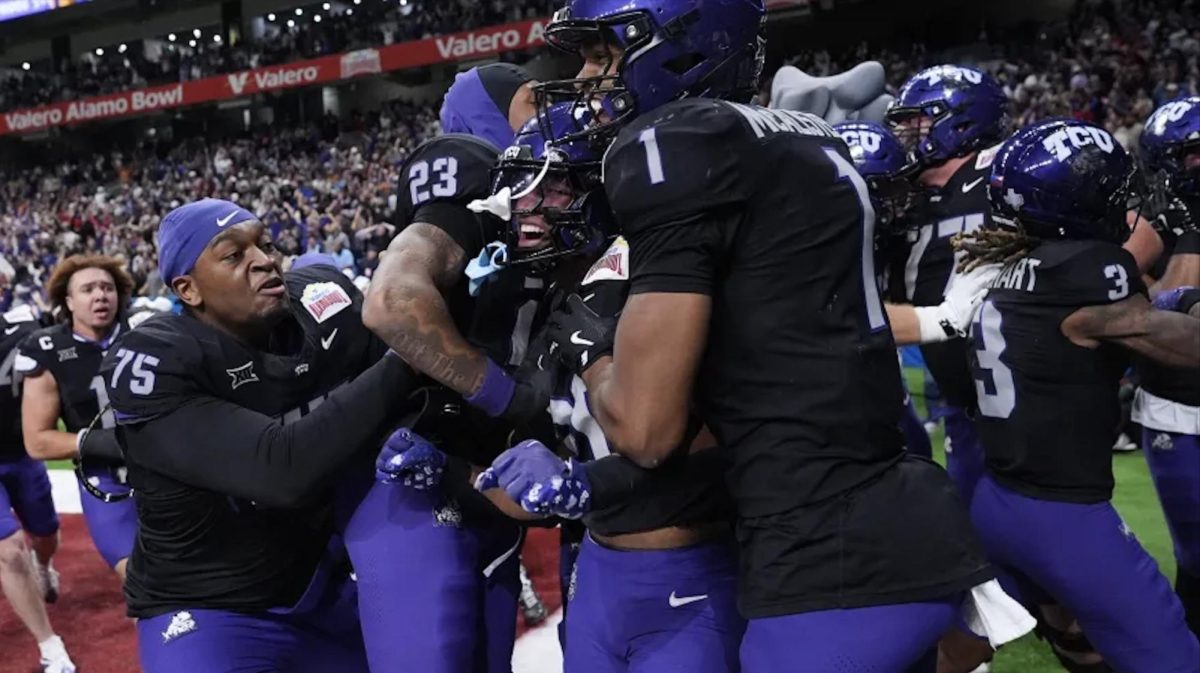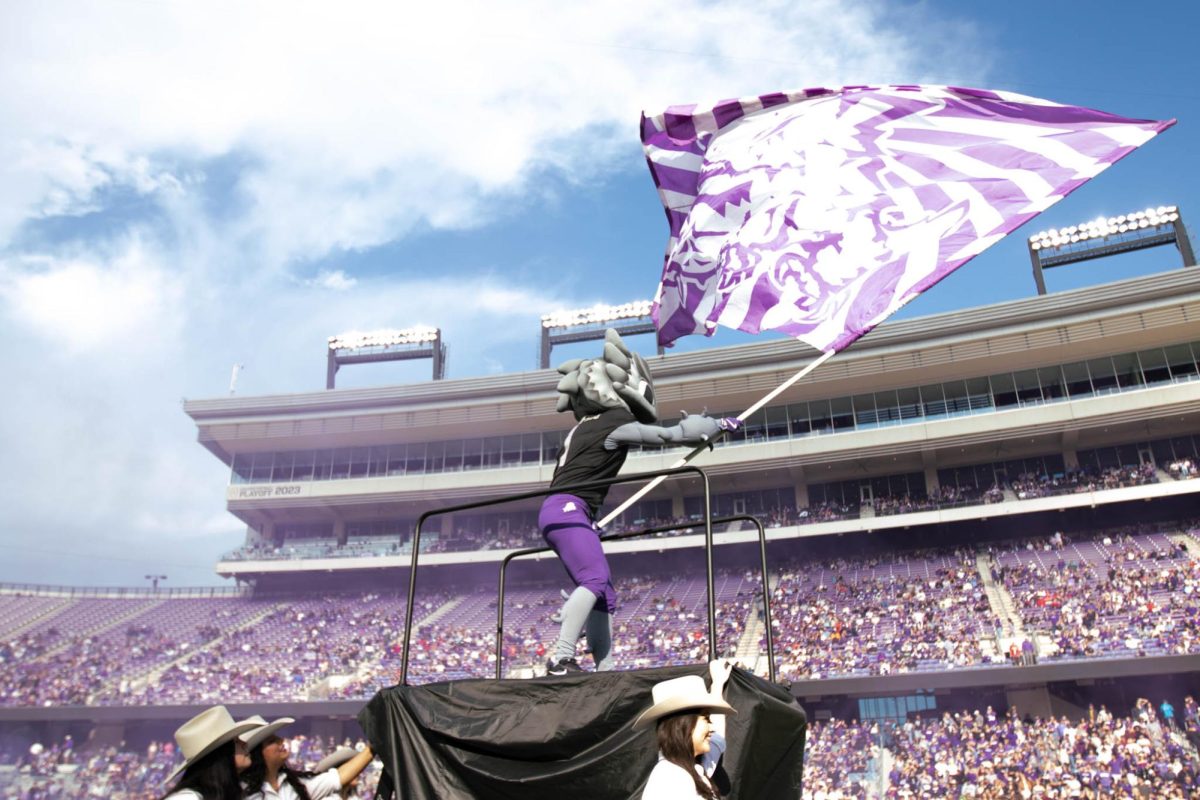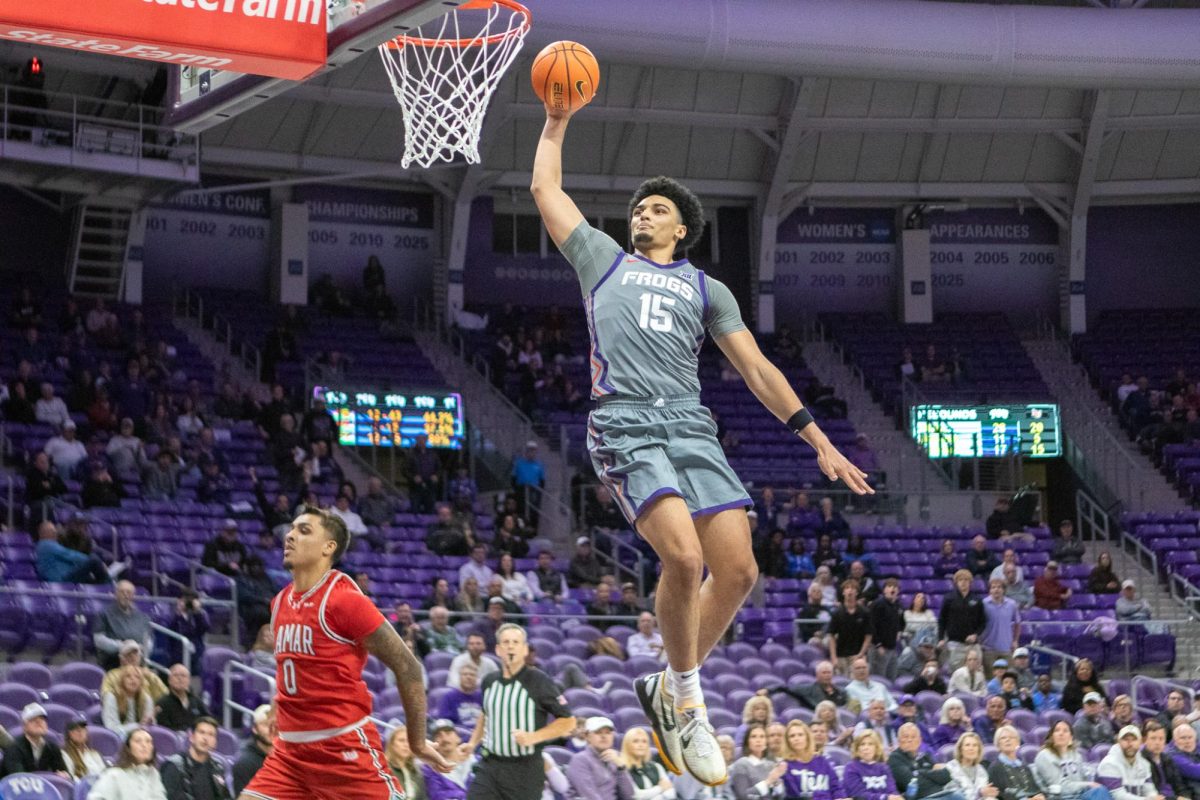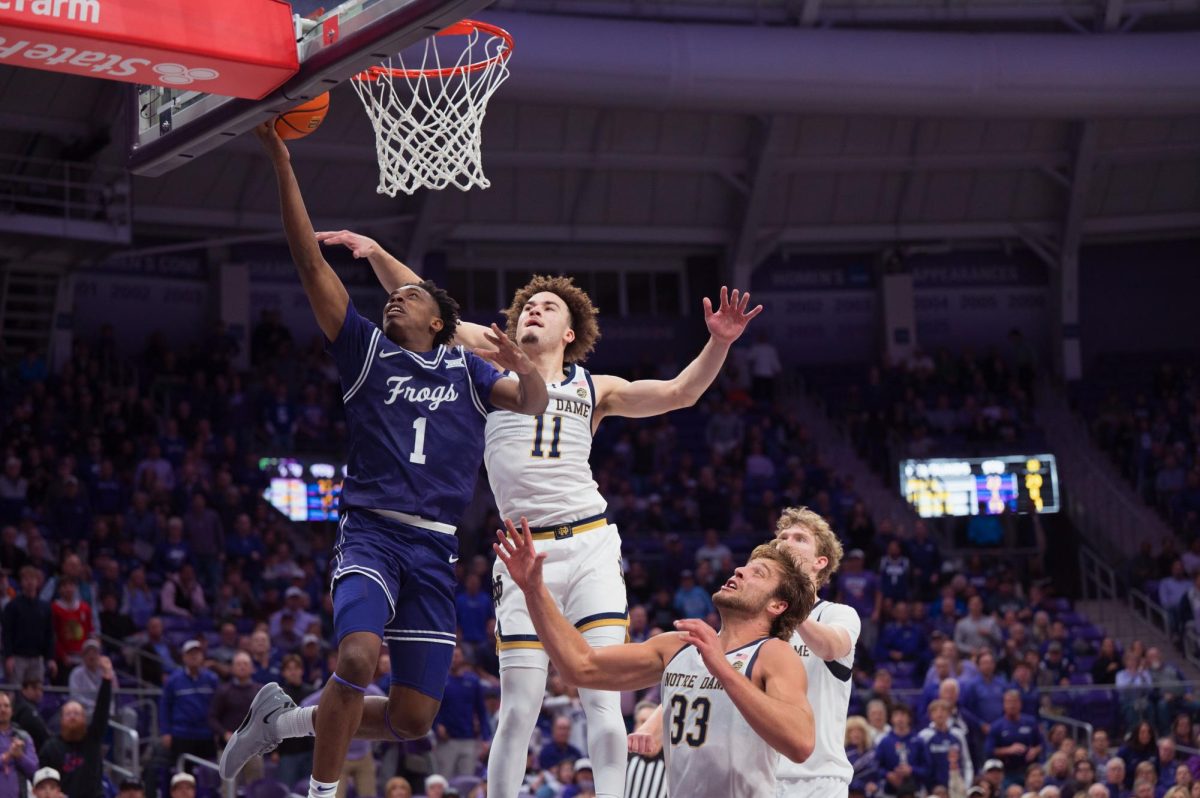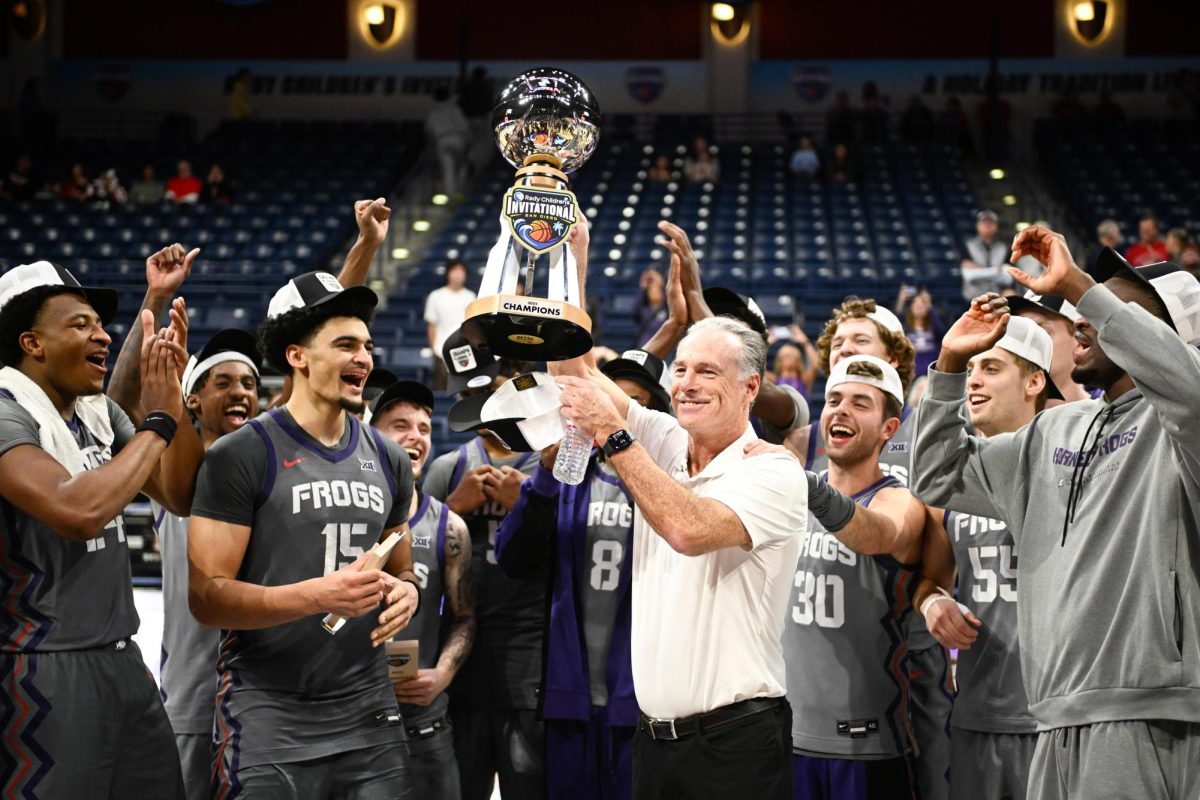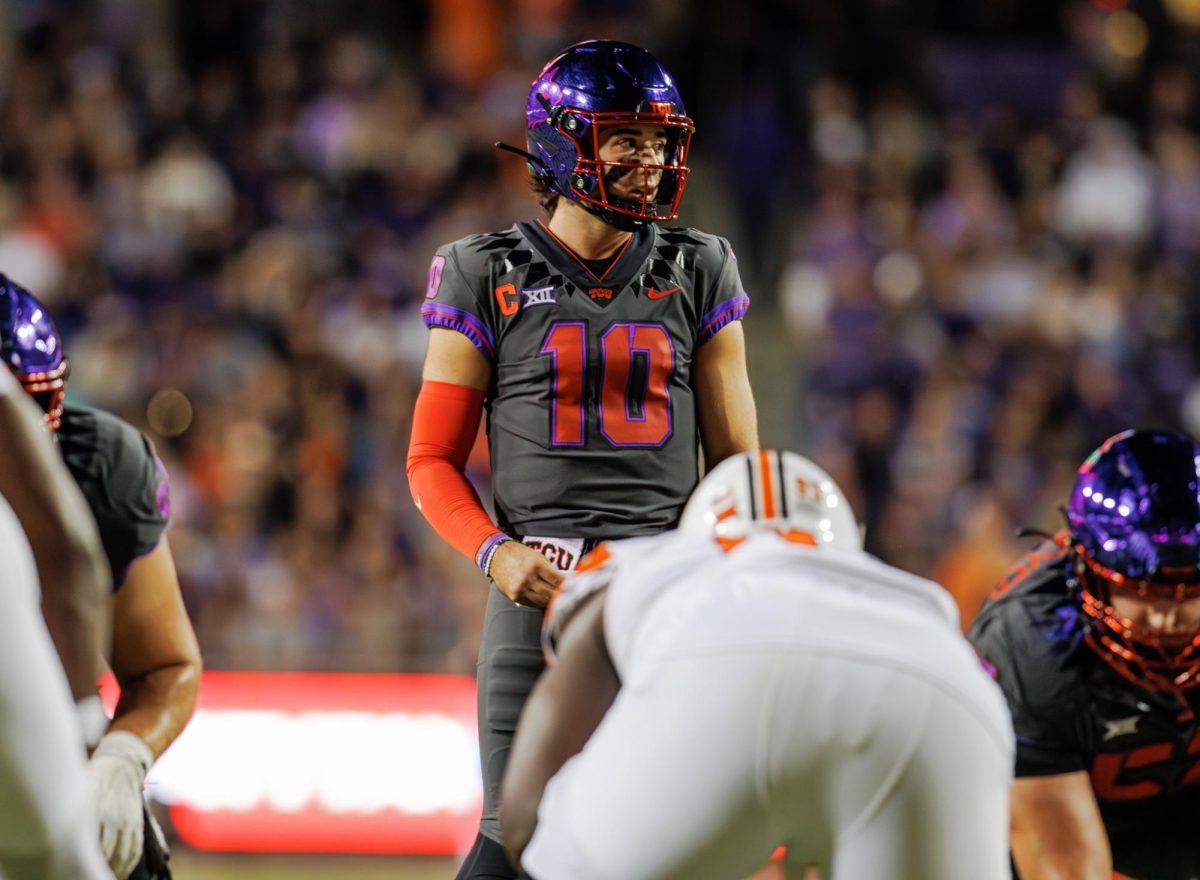College basketball used to be about evaluating and developing players; now it’s all about the transfer portal.
This spring 2,320 Division I players entered the portal. That’s about 41% of the 5,607 players eligible to play. Coaches aren’t trying to woo players from junior colleges and high school, instead their focus is on the known talent looking for a new home.
Jamie Dixon, TCU men’s basketball head coach, gets an updated list of the players in the transfer portal every day. His assistant coaches alert him about players of interest, those who are looking for a better team or more time on the court.
“Recruiting in the portal is different,” Dixon said. “You are not going to the player’s school; often you are doing Zoom recruitment, and it is a shorter time frame. The players have been to college, so they are not as interested in taking visits, they just want to get to know their value and role.”
When added to the impact of NIL payments, allowing players to be paid for name, image and likeness, it’s clear to see that recent NCAA rule changes have changed college hoops in significant ways. For decades, players were held to a 1961 rule that made all athletes who transferred schools sit out one year and lose a year of eligibility.
That began unraveling early into this century as student-athletes pressed for structural changes with the governing body of college sports.
Because of the sport’s small-roster teams, the portal has an outsized effect on basketball. For example, after transfers and graduates left, Baylor University brings no returning players into the 2025-26 season. Instead, the team will field a mix of recruits and transfers when they hit the paint this fall. The Bears focus in the portal has been picking up players who have been good at mid-majors. Baylor has picked up seven players from Rice, Texas A&M Corpus Christi, High Point, Omaha and Wyoming.
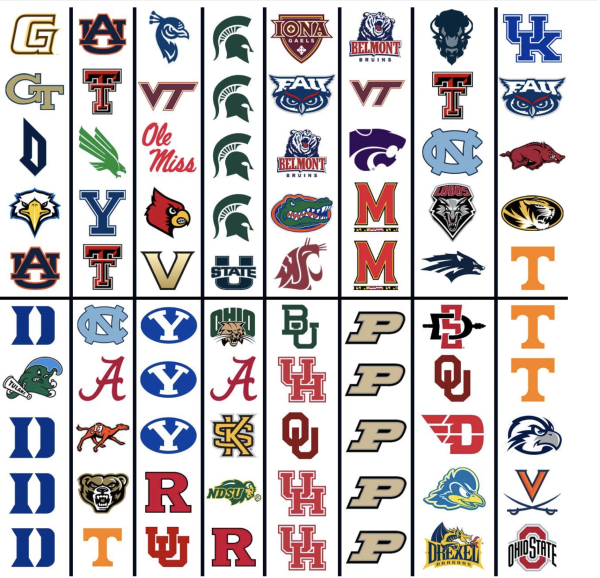
As this year’s NCAA tournament showing, mid-major players are besting recruits as coaches attempt to build a winning team.
Purdue was only team that made the Sweet 16 without having a transfer in their starting five.
This was also the second time in NCAA history that the men’s Final Four was all one seeds.
The transfer portal seems to be a siren to some of the best players from mid-major schools who hope to transfer to schools that are destined for greater success.
This has made the tournament “Cinderella runs” look less likely for the future.
“It is trending towards Power conferences being more dominant because players from mid-majors are transferring up to the Power conferences,” Dixon said.
Coach Dixon also said the shift will require high school players to be patient with their recruitment.
With the transfer portal high school recruits are not only trying to compete against other high school kids for a spot on a division one roster. They are also competing against every other division one basketball player.
Another way coaches are filling their rosters is buying out a player from a European basketball league, promising them NIL money to play in college.
This is something that has never been seen before, and top programs like Kentucky, Michigan, Illinois and Purdue have all done it. The days of teams trying to get young players and keep them together so they can develop seems to be a thing of the past.
It is now about putting the oldest team with the most amount of experience on the court.
“The evaluating is not really there,” Dixon said. “It’s strictly get the production guys that have produced most recently, you are not projecting, you are not evaluating, you are not developing.”


